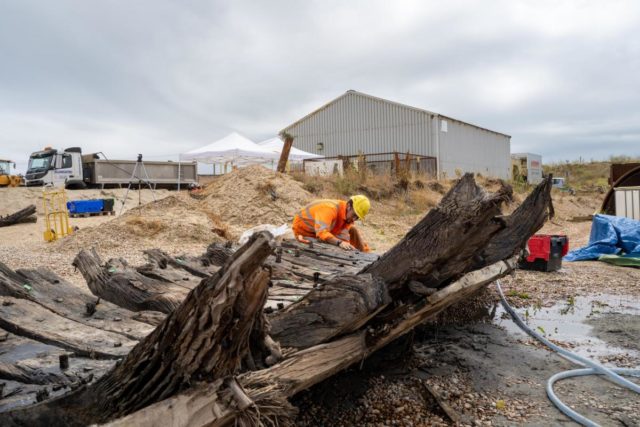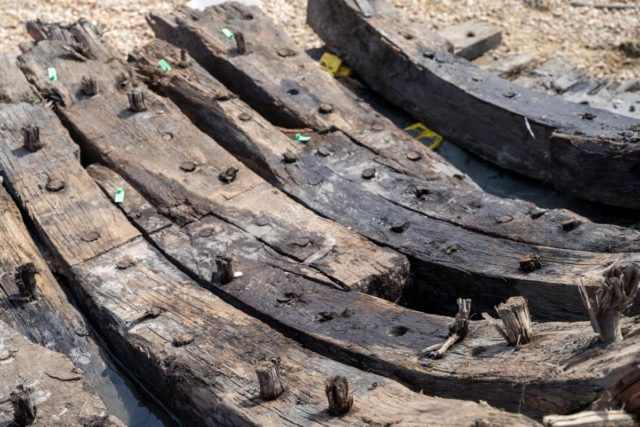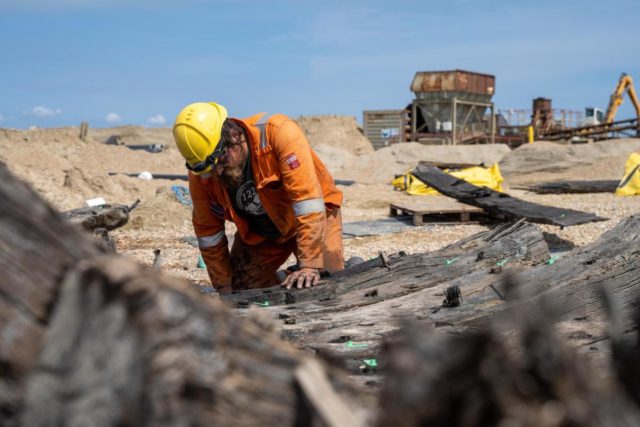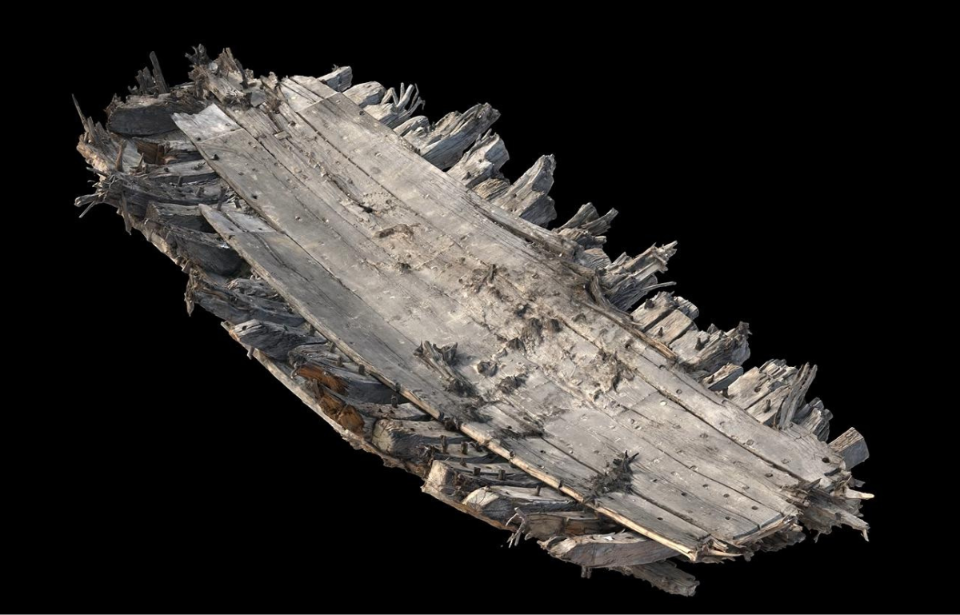Although shipwreck finds are usually quite interesting, there are some discoveries that are much more unique than others. One particular shipwreck, recently featured on Digging for Britain, is a perfect example of an extremely rare find. It is an Elizabethan ship from the 16th century, unexpectedly found in the depths of a quarry during a routine survey.
Discovered in a quarry
In April 2022, a team from construction supply company CEMEX was undertaking routine operations in a quarry in Dungeness, Kent County. They were dredging for aggregates when they instead came across the remains of a ship, roughly 300m away from the coast. Confused by their finding, the team alerted the Kent County Council to get further guidance.

It quickly became apparent to the council that what the team had stumbled upon was something extraordinary. They brought in further specialists to work on the project and sought additional funding from Historic England to help with the operation. A group from Wessex Archaeology came in to spearhead the ship’s excavation at the quarry, and they were able to provide more details about the find.
Further excavations
With further exploration, the site revealed over 100 timber boards that had once made up the hull of the ship. These wooden planks were kept together using wooden nails, rather than iron. The hull was made using English oak, an incredibly sturdy wood that was used for hundreds of years – up until the 19th century – as the primary building material for ships.

Additionally, the team from Wessex Archaeology was able to determine how the vessel came to be located so far from water. Their leading theory is that the quarry is located on what was once the coastline. The ship was likely wrecked or abandoned there and was eventually buried by sediment. The team also completed dendrochronological dating on the timber beams which showed that they are from between 1558 and 1580.
A rare find
The ship was extremely well preserved for its age due to the sediment in the quarry, giving researchers incredible insights into a period where there is little evidence on shipbuilding. What makes this discovery so rare is that there are very few 16th-century ships recovered, despite the 16th century being an extremely active and evolving naval period that saw some major overhauls to the way that ships were built.

As so few of these vessels have survived the ages, there is still very little known about ships, their construction, and sailing during the Elizabethan period. As stated by Antony Firth, Head of Marine Heritage Strategy at Historic England, “The remains of this ship are really significant, helping us to understand not only the vessel itself but the wider landscape of shipbuilding and trade in this dynamic period.”
More from us: Archaeologists Were Amazed to Find This Odd Artifact on a Massive Shipwreck
Although questions still remain, such as which specific ship was found, research is ongoing to properly assess the amazing discovery.
